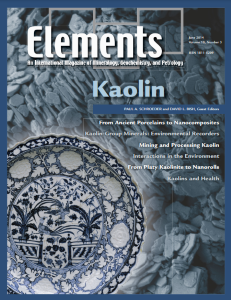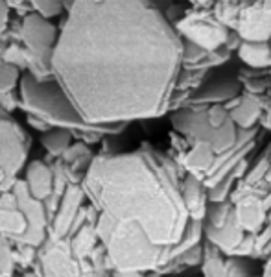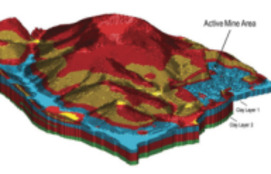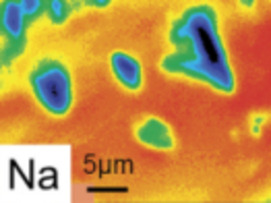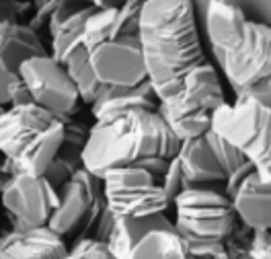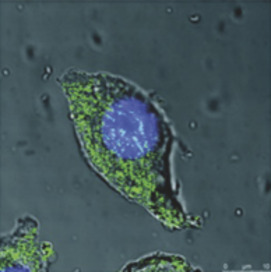
Kaolin
Paul A. Schroeder and David L. Bish – Guest Editors
Table of Contents
Although bearing the simple name “kaolin,” this natural material has a variety of geologic origins and many industrial applications significant to society. Known as china clay, kaolin has a long history dating back to Kauling, China, and its fi rst exploitation in the field of ceramics. Kaolin is one of nature’s most abundant nanomaterials. Its fi ne, clay- sized particles, unique shapes, and layered structures make it central to Earth’s near-surface critical zone. Concerns for energy efficiency and environmental awareness in the industry have led to advances in mining and reclamation practices. The crystallographic and elemental varieties of kaolin require them to be carefully characterized as they lend themselves for use in plastics, papers, pigments, and ceramics. Kaolin minerals are being probed with computational chemistry and new spectroscopic tools to expand their applications and to understand their significance in biology. We are now exploring how kaolin can be nanocomposited to create materials with novel properties.
- Kaolin: From Ancient Porcelains to Nanocomposites
- Kaolin-Group Minerals: From Hydrogen-Bonded Layers to Environmental Recorders
- Mining and Processing Kaolin
- Interactions of Kaolin Minerals in the Environment
- From Platy Kaolinite to Nanorolls
- Kaolins and Health: From First Grade to First Aid
AHF Analysentechnik
Australian Scientific Instruments (ASI)
Bruker Nano
Cambridge University Press
Cameca
Elementa
FEI
Excalibur Mineral Corporation
Geochemist’s Workbench
Horiba
JEOL
Rigaku
Savillex
Tescan Orsay Holding
Zeiss
Thermo
v10n4 UNCONVENTIONAL HYDROCARBONS
Guest Editors: David R. Cole (Ohio State University) and Michael Arthur (Pennsylvania State University)
The realization that unconventional hydrocarbons, such as gas and oil shale, oil sands, and heavy oil, can now be exploited more effec- tively and economically has stimulated exploration and exploitation on a global scale. This has led to a new economic and environmental landscape in energy matters that we are only now starting to under- stand. Exploiting unconventional hydrocarbons requires additional technology, energy, and capital compared to the industry standard. This thematic issue will address the geologic and geochemical nature of these resources and their impact on global socioeconomics and the environment.
- Unconventional Hydrocarbon Resources: Prospects and Problems Michael A. Arthur (Pennsylvania State University) and David R. Cole
- Dash for Gas, 21st-Century Style! Seth Blumsack (Pennsylvania State University)
- From Source Rock to Reservoir: The Evolution of Self-Sourced Unconventional Resource Plays L. Taras Bryndzia (Shell Oil Co.) and Neil R. Braunsdorf (Shell Oil Co.)
- Oil Sands and Heavy Oil: Origin and Exploitation Stephen R. Larter (University of Calgary) and Ian M. Head (University of Newcastle)
- Fingerprinting “Stray” Formation Fluids Associated with Hydrocarbon Exploration and Production Benjamin Rostron (University of Alberta) and Serguey Arkadakskiy (Isobrine Solutions Inc.)
- Abiotic Gas: Atypical, But Not Rare Giuseppe Etiope (Istituto Nazionale di Geofisica e Vulcanologia) and Martin Schoell (GasConsult International)
- Asteroids: Linking Meteorites and Planets (February 2014)
- Ophiolites (April 2014)
- Kaolin (June 2014)
- Unconventional Hydrocarbons (August 2014)
- Cosmogenic Nuclides (October 2014)
- Graphitic Carbon (December 2014)
Download 2015 Thematic Preview


